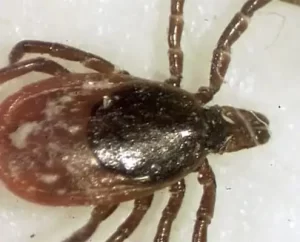
OC 949-428-4500
LA 310-460-2444
Lyme Disease Prevention : Staying Safe from Lyme Disease During Tick Season
A Nova Scotia nurse says her community is facing a Lyme disease epidemic in the form of an increased risk of Lyme disease. She is calling on Ottawa to act, even after it announced 4 million dollars in Lyme disease prevention last week. This time of the year, we’re seeing an increase in ticks and tick bites across the country.
In New Brunswick officials say they expect to see an increase in Lyme disease cases. The new Lyme disease strategy is expecting to raise public awareness of both the infectious disease and bring up case numbers called “vastly unreported in the past”.
We brought in Dr. Danielle Martin to give us some insight on Lyme disease prevention, how to protect yourself and also answer some questions about Lyme disease. Lets begin with the first question.
Dr. Danielle Martin: It’s hard to know sometimes with this increase, whether we are seeing an actual increase in the number of Lyme disease cases or whether we’re just doing a better job of identifying cases and picking them up.
We are definitely seeing a shift in the geographic locations where Lyme disease is found and that’s because the disease is carried by ticks that attach themselves to birds. As bird migration patterns shift, we see the ticks being delivered to various places where we weren’t seeing them before.

We brought in Dr. Danielle Martin to give us some insight on Lyme disease prevention, how to protect yourself and also answer some questions about Lyme disease. Lets begin with the first question.
Dr. Danielle Martin: Right, these are tiny ticks that attach themselves to infected animals. Often rodents, could also be deer or birds. When the ticks attach themselves to birds they get carried to various other places. Having fed from those infected animals, they can then transmit the disease to humans.

The classic Lyme disease bullseye rash.
Dr. Danielle Martin: Lyme disease is a difficult disease to diagnose because the symptoms are so vague and they can be attributed to so many different things. Fever, joint pains, headaches, these are things that can be caused by any number of diseases, not just Lyme disease. Lyme disease is by far the easiest to pick up when it’s diagnosed early. There is a classic rash that people can get around the area where the tick has bitten them.
Classically called the bullseye rash. It’s a big round rash that appears around the area where the tick has bitten. Usually a number of days after. The rash usually starts five to seven days after and grows over time. That’s much easier to identify. If people observe that they’re having a rash in a single location of their body that they don’t have an explanation for it they should definitely seek medical attention. Those are the basics.

If you find a tick on your body remove it ASAP!
If you have been bitten by a tick you can extract the tick whole with a pair of tweezers by pulling it directly out of the skin. You can seal it up in a bag and you can send it to a lab for analysis. If this person still has the tick, that’s an option and it is actually an important way that the Public Health Agency of Canada monitors the migration pattern. Where we see this infection across the country by a surveillance process where they actually do an analysis of the ticks.
The classic rash that people get from Lyme disease, comes later. You usually do not see it in the first 24 to 48 hours. That’s the short of the classic rash. It can look a variety of different ways but that’s the classic one. Usually a rash in the first 24 to 48 hours is not an indication of Lyme. It is more of an irritation from having been bitten. If you know you’ve been bitten by a tick and you’re not feeling well, you should seek medical attention.
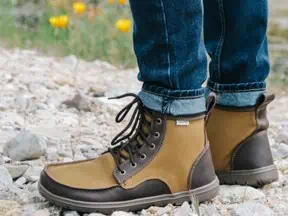
Preventing Lyme disease starts with covering up you ankles and legs when out in the wilderness.
Dr. Danielle Martin: To prevent lyme disease we’re not talking head to toe. The most important things to cover up are your ankles and legs. Sandals are out. Sandals are not the best for going hiking in the woods. Flip flops for hiking are probably not safe anyways. We should be wearing good footwear.
I think the other thing is that people should be aware if they’re in an area where Lyme is endemic. The Public Health Agency of Canada and Health Canada have great information on the web about the geographic distribution of Lyme. The short answer is, it depends on where you are. If the risk is significant, then you have to take precautions, take your chances and make your choices as we all do in life.
If you know that you’re in an area where there is Lyme disease and it’s spring or summer time, which is prime time for Lyme and there are cases being diagnosed, it is probably a good idea to cover up your ankles.
Dr. Danielle Martin: There is no effective vaccine for Lyme disease. It’s important to differentiate between trying to reduce tick bites in animals, or anyone, versus a vaccine against the disease which ticks carry.
Lyme disease doesn’t come from the tick itself. It’s being transferred from another animal carrying the disease to the human victim. The tick is just the vector. It’s the mechanism for transferring it and until now, present day, we do not have an effective vaccine against Lyme disease. This is why the most important way we can prevent people from getting infected is to prevent them from getting bitten by a tick.
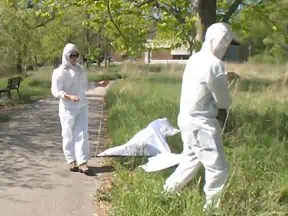
The government uses surveillance to find out where the Lyme carrying ticks are spreading.
Dr. Danielle Martin: Last week the federal government announced an entire Lyme disease strategy which I think is appropriate.
It involves controlling the tick population, vaccines, quicker diagnosis and treatment for Lyme disease. Everything from research to try and look if there is a possibility for developing a vaccine. All the way through how do we control the tick population? How do we monitor the spread of Lyme?
Surveillance is very important to understand how the population of Lyme carrying ticks is shifting across the country. Where can we expect to see Lyme. That’s where we then need to do more public education about Lyme disease prevention for both for citizens and for health care providers. Then all the way through to treatment.
We are already seeing increase in the amount of conversation about this and as that strategy rolls out, we’ll see more.
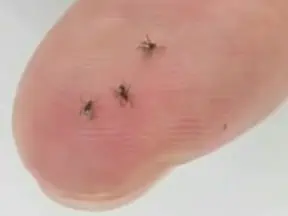
Oftentimes it’s the tiny nymph ticks that bite people and they don’t even know they’ve been bitten.
Dr. Danielle Martin: The first thing is that ticks are small. They are much smaller than most people realize. Sometimes when we see them on the video they sort of look like the size of a cockroach or something. Actually they’re tiny.
The stage when they are carrying Lyme and biting, they’re often quite small like the size of a poppy seed or maybe up to the size of a sesame seeds. You may not even realize it’s a tick. You might just look down at your skin and realize you’ve got a little bite of some kind and that you’ve got a little black dot. Use of a magnifying glass is not a bad way to try to determine what that little black dot is.
The second thing is, although there are some anatomic differences between the kind of ticks that carry Lyme and those that don’t, I don’t actually recommend you doing this at home. If you’ve got a tick in your skin, pull it out with a pair of tweezers, put it in a bag or sealed container and bring it in for analysis.
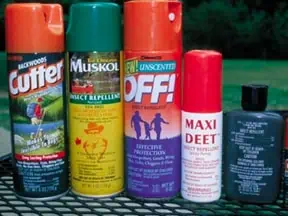
Bug spray works great to keep ticks off you and prevent Lyme disease.
Dr. Danielle Martin: Yes it is. The CDC website recommends that people use a product that contain at least 20% DEET. That’s a pretty intense concentration of DEET.
There are also treatments that you can use on clothing. If you’re going for a serious hike in the woods for example, permethrin treated cloths can be purchased that are pretreated and that’s an effective way, in addition to covering up, to prevent getting bitten by a tick that can carry Lyme.
Dr. Danielle Martin: I don’t use the word hoax but I’m not aware of any scientific evidence to support the use of bee venom therapy. I wouldn’t recommend it.
Dr. Danielle Martin: There is nothing topical you can put on that can prevent the transmission of Lyme. If you believe that you have been bitten by tick and the skin is irritated or itchy, the most important thing is to wash with soap and water first. Immediately after you’re bitten. That’s just good infection prevention and control.
If there’s irritation locally, you can take an oral antihistamine. If there’s any skin reaction, I wouldn’t treat that with something topical, I would seek medical attention because you want to make sure that this isn’t the beginning of the development of the classic Lyme disease rash.
AMA Regenerative Medicine & Skincare | 1570 Brookhollow Dr., Santa Ana, CA 92705 | 6310 San Vicente Blvd STE 285, Los Angeles, CA, 90048 Disclaimer: though everything on our website comes directly from reputable publications and scientific journals; and though thousands of these articles are available on official government websites (https://pubmed.ncbi.nlm.nih.gov), they have not been evaluated by the Food and Drug Administration and the FDA has not certified, endorsed or approved any of the scientific findings as methods of treating or diagnosing any diseases or illnesses.